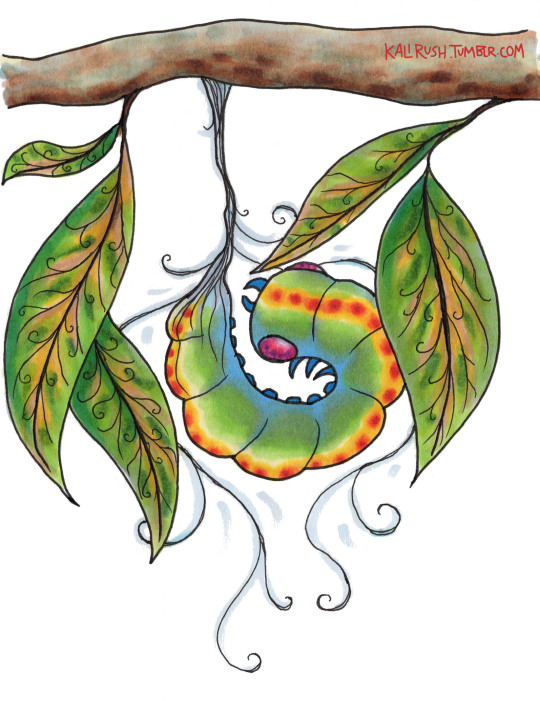#pseudopodia
Text
Amoeba Eating Diatoms Like Candy 2000% Timelapse - 300X and 1300X Magnification.
53 notes
·
View notes
Photo

#ciliates#protozoans#pseudopodia#capture#prey#contractile#vacuole#water#flagella#locomotion#nuclei#science#solutions
2 notes
·
View notes
Photo

#studyblr#notes#medblr#medical notes#med notes#sporozoa#protozoans#parasites#parasitology#microbiology#parasitology notes#microbiology notes#microbio#microbio notes#pseudopodia#malaria#p vivax#plasmodium#plasmodium vivax
3 notes
·
View notes
Text
Julia Ann: In With The New - Brazzers
Tributo a las tetonas
Husband cums while watching wife fuck bull in theater room
Big Girls Rides Dick Bouncing On Top Bareback Making It Fill Her Fat Pussy With Cum
Ms Kayz last early morning blowjob
Milf solo big tit dildo When we got him rigid we let him drill our
Foxy Boxing with Paris Knight and Paris Love
Busty Milfs Julia Ann Cherie Deville & Aaliyah Tongue Fuck!
who has fucked a gripping pussy?
Smoking, Stripping, and Shaking my PAWG ass
#latewood#Paguma#incarcerating#rusticities#colporrhaphy#hymnologist#Pyramidella#vehemence#acetiam#vassaless#Landri#unadmiringly#collineation#comedial#glycopexis#scissures#antichurch#circulatory#pseudopodia#knockless
0 notes
Text
Today’s advice from your Goth Auntie
Drink some water! Take your meds!
Remember that when all else fails, spite is an excellent motivator. Choose spite.
The Lurking Horror is having nightmares about getting its pseudopodia trapped in playground equipment.
❤️ Auntie Jilli
153 notes
·
View notes
Note
Rereading the series and just got to The Underground with the crazy Yeerk. Wondering if they ever cover what happens to Yeerk if their host has a stroke or seizure?
My guess is that yeerks do emergency exit drills or training for exactly that kind of scenario. Because we sometimes see a yeerk successfully get out of a host after a severe injury but before the host dies (e.g. Hork-Bajir Chronicles, #8), and sometimes see the yeerk try and fail to exit in time (e.g. #41, #17).
So my guess would be that if the host gets a brain injury (even an internal-origin one) then the yeerk drops all its pseudopodia and starts zooming for the nearest exit. If it proves to be a false alarm, then hopefully there are other controllers nearby to help put the yeerk back into kandrona and/or brain. If it 's not, then at least that yeerk being somewhat stranded on an alien planet is better than being dead. Because we know that what kills a host kills a yeerk who can't get out in time, and both stroke and seizure have uncertain odds of being deadly.
29 notes
·
View notes
Photo

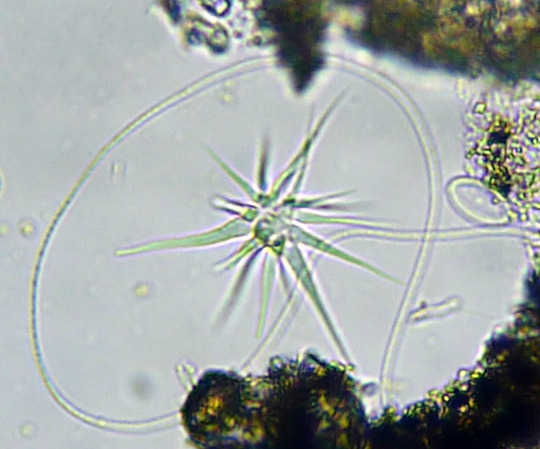


I remember when I first came across these weird star things under the microscope, I assumed they were some kind of pointy algae (blame the microscope for giving everything a slightly green hue... wait, is that why bacteria are always portrayed as green?) but it turns out they are amoebae with stretched-out pseudopodia, or “arms”.
It’s a bit more clear that they are amoebae in this photo:
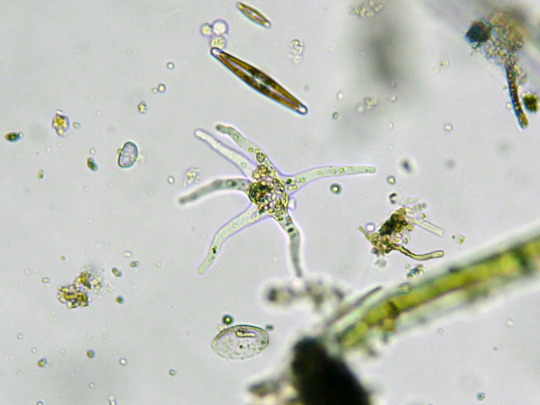
See? Nice and wobbly, the way amoeba should be
*Also, amoebae is the plural form of amoeba. Personally I feel like that is too many vowels but ok.
504 notes
·
View notes
Quote
A conclusion of that same era was that language is alive. I experienced this very concretely on acid. English as an animal, a kind of amoeba, extending its pseudopodia of description into every nook and cranny of reality, a kind of syntactical Los Angeles, ever growing, expanding and including more and more empty or natural territory into its grid of meaning.
Terence McKenna, Orfeo: A Dialog between Robert Hunter and Terence McKenna
78 notes
·
View notes
Text
#923: *a very deep sigh*
I'm keeping rants to myself mostly but not this time.
I aim for Sebastian and I am very sorry Sebastian enjoyers who follow me, but the situation has gotten out of anyone's control by now. [1]
So.
Can Sebastian-and-its-pseudopodia-Ominis part of the fandom not tag #any secondary character when said secondary has 3 mentions 1 brief appearance while Seb(Omi) x Whoever gets the spotlight?
*sigh*
You do realise HL isn't all about these two boys, yes?
Excuse the tired me being harsh, I'm just perpetually annoyed by the fact the de-facto fandom treats everything as Sebastian with very little consideration for non-Sebastian things. Peapol must be not recognising them as its very own but a background or an addition to Sebastian and his struggles, effectively synonymising him with everything there is to HL -- a little far-fetched proposition though, I will tell you that (but I'm not overly exaggerating: people use his tag to gain traction sometimes, and if isn't any indicator, idk what is).
And a valid personal approach, I will add. Delulu is ought to be free.
But it should stay within personal blogs, within its own set of tags, might I dare to jab, because it has not started a few hot minutes ago, yesterday or yestermonth. Yesteryear, precisely.
So, yeah, as I just said:
DON'T TAG SECONDARIES,
when they play very little role in your things.
Be that friendly fandom you're imagining HL fandom to be.
Don't create more tension than there already is [2] by treating other people's interest as an inseparable part of your own.
#little side notes:#[1] not putting any fandom tags because i just know it's not really necessary#[2] you have _literally zero idea_ of how many people hate sebastian for him being put everywhere#for the feeling of everything must be about him and for the apprehension some of his girlies induce#it's the same as hating a band for it blasting off from every radio or a movie for the hype clouds around it#3) that is all to add to a plethora of canon-given reasons; yes there are quite a few of people hating him as a character too#hello btw im one of them#днявочка#eng tag#днявочка: hlegacy#днявочка: фандомное
13 notes
·
View notes
Text
Ea, Our Second Chance (10b)
10b. Eucytobionta (part 2/3, unicellular diversity)
(Index)
(< 10a. Eucytobionta, cell structure)
(> 10c. Eucytobionta, biotechnology)

(original link)
« The diversity of microscopic life was, and still is, overwhelming: from day one, each drop of water and grain of sand revealed a bewildering variety of forms. No more than on Earth, of course; don't think for one moment that we fully understood the complexity of our mother world when we left it. We're still making new discoveries from the few experimental models we brought over. Nevertheless, this represented the perfect opportunity to test out the new kind of science we were going to build. » – dean Sofia Torres, Tabula Rasa
I. Kingdom Monokarya (etym. "one kernel"). Unicellular, never colonial. Usually very small (<20 μm); only protonucleus (almost certainly secondary loss of paranuclei; polynucleate kingdoms do not form a clade). Usually flagellate, at least at one stage. Mostly endoparasites, within fluids of multicellular organisms (lymph, hydromuscular liquid); a few intracellular species. Outside of hosts they form capsules highly resistant to dehydration, heat, and radiations. Representative genera: Ankylococcus, Myoecia, Nesokaryon.
II. Kingdom Pogonocyta (etym. "bearded cell"). Unicellular, frequently colonial. Usually have superficial cilia or flagella. Often have two protonuclei, which they exchange in a form of sexuality not synchronous with reproduction (which occurs by fission or sequential fragmentation). Often very large species (commonly >0.1 mm with >20 paranuclei, Titanopogon reaches 8 mm in length); may have structures such as ciliate wheels, funnels, traps, stylets, articulated "jaws", etc. to feed on smaller cells, as well as visual organs and permanent digestive vesicles. Eyespots may have developed from endo-symbiotic unicellular algae. Smaller species may form clonal colonies via incomplete fragmentation, e.g. Petrovella. A few aerial species are known (most within genus Uranocyton). Representative genera: Hekatokaryon, Hylonectes, Nanognathus, Petrovella.
III. Kingdom Ostracophyta (etym. "tile-plant"). Unicellular, rarely colonial. Rigid polyhedral shell, apparently formed by crystalline sulfonamide impregnating the cell net; pseudopodia emerge from gaps, usually regularly placed, sometimes at the vertices of the shell. Macroscopic needleweed ("Hyalophyta", e.g. Arslanophyton). In the colonial forms (e.g. Endolithus), the shells may fuse and trap sediment forming stromatolite-like structures, pseudopodia may connect cell bodies. Usually phototrophs or mixotrophs (= energy from both sunlight and organic matter). All major forms of frostblight (white, purple, mealy, etc.) are ectoparasitic Ostracophyta with invasive root-like pseudopodia, but do not form a single clade. Representative genera: Arslanophyton, Astrapocyton, Endolithus, Phytopachne.
IV. Kingdom Colloplasmi (etym. "glue-form"). Unicellular, almost (?) exclusively colonial. Lobate cells, able to move by circulating cytosol through the lobes. Adhesive cell envelope, apparently rich in glycosyl-sulfonamides, which may form a common matrix for colonies. Sometimes mineral particles are incorporated (origin of Lithobionta?); mushroom-like, coral-like, or grass-like colonies both in water and on land, with specialized fruiting bodies. Often the colonies liquefy or "evaporate" when disturbed or damaged (special toxic cell morph in Ceratoides). Saprotrophs, herbivores, carnivores; unconfirmed case of a Cordyceps-like neural parasite. Representative genera: Ceratoides, Danaë, Eidocarpus, Xanthoplasma.
V. Kingdom Lithobionta (etym. "stone-life"). Multicellular. Forming pumice-like porous mineral structures; "living boulders". Representative genera: Lithobius, Pliniella.
VI. Kingdom Haematophyta* (etym. "blood-plants"). Multicellular. Photosynthetic organisms with zinc-based pigments; "red plants". Representative genera: Corynetes, Hypogaea, Tomophylla, Tribaculum.
VII. Kingdom Fuscophyta (etym. "dark plants"). Multicellular. Photosynthetic organisms, methanogens; "black plants". Representative genera: Cystophyton, Dendrocystis, Nepheloecia.
VIII. Kingdom Enantiozoa (etym. "mirror-animals"). Multicellular. Mostly motile chemoheterotrophs; Ean "animals". Representative genera: Akkadia, Dendrocephalus, Prosopogyrus, Semaphorus.
* Named "Erythrophyta" in other publications. The two names are to be considered synonymous, when defined as "the most exclusive clade including both Maurophytum purpureum and Corynetes corynetes".
– Vikram Jariwala et al., "Preliminary notes on Ean "eukaryote" diversity", Xenobiology Review, 14 (38 AL)
46 notes
·
View notes
Note
Bunch of answers:
-The thing in the picture is a 𝘚𝘺𝘳𝘪𝘯𝘨𝘢𝘮𝘮𝘪𝘯𝘢 𝘧𝘳𝘢𝘨𝘪𝘭𝘪𝘴𝘴𝘪𝘮𝘢, a kind of Xenophyophorean, which are specialized foraminiferans known for making funky tests (shells) out of sediments. It has no relationship to plants and can't photsynthesize, not sure where you gor that from :)
-SARS viruses have no relationship to the SAR clade. SARS stands for Severe Acute Respiratory Syndrome whereas (T)SAR is just the initials of its majour groups. The name similarity is a complete coincidence.
-S: Stramenopiles is a diverse group of organisms also called Heterokonts (greek for different flagella), as most have at one point of their life cycle 2 flagella, one with and one without "little hairs" on top of the flagellum and the length is also different. Some notable representatives:
• Oomycetes, also known as pseudofungi, which are organisms that look quite a bit like fungi (they form hyphae and micelia) but have no relationship at all. Some are saprophytes whereas others are parasites of plants and fish, including potato blight, the organism that caused the Irish Potato Famine
• Diatoms: Unicellular algae which form very beautifully patterned shells out of silica (so glass), and are very abundant.
• Brown algae: Brown algae have no relationship to plants or other algae. Unlike plants and red and green algae, which acquired their chloroplast from a primary endosymbiosis event with a cyanobacteria, brown algae and many other unicellular algae acquired their chloroplasts by undergoing endosymbiosis with 𝘢𝘯𝘰𝘵𝘩𝘦𝘳 already existing alga. (look into endosymbiosis theory if u have no idea whats going on here)
-A: Alveolata are organisms which have a kind of sacs made of membrane under their main membrane called alveoli. They are also incredibly diverse. They include
• Dinoflagellates: A kind of algae which (in some cases) modified their alveoli to fill them up with cellulose and form a kind of shell. They have funky shapes and are often abundant in the sea. Some of them are known for causing massive blooms which turn the sea red (red tides) and can cause food poisoning if you eat seafood from where a bloom happened.
• Ciliates: Organisms known for having lots of cilia on their bodies, won't go into them because they're very diverse and different, but you can think of a 𝘗𝘢𝘳𝘢𝘮𝘦𝘤𝘪𝘶𝘮 for a typical example of a ciliate.
• Apicomplexans: Mostly parasitic organisms which have a sort of "complex" on the tip of the cell which helps them inject themselves into other cells, this includes the organism which causes malaria, 𝘗𝘭𝘢𝘴𝘮𝘰𝘥𝘪𝘶𝘮.
-R: Rhizaria are amoeboid organisms which often have long pseudopodia called filopodia and are, who would've guessed, also very diverse. The most well known of them are
•Formanifera: A group of mostly marine organisms which form single or multi-chambered shells which can get very complex and are abundant in the sea, so much so that if you know which foraminifera lived in which time periods, you can use their shells in marine sediments to assign a date to them.
• Radiolarians: Organisms which are known for making very intricate and beautiful shells which are very diverse in shape. Look up some of Ernst Haeckel's illustrations of Radiolarians.
-T: Regarding the Telonemia, very few species are described and they aren't very well known, but genetic analysis placed them close to the SAR clade so the acronym is sometimes extended to TSAR
Hope all this helps
THANK YOU SO MUCH MY DUDE THIS IS AN AMAZING ANSWER AHAHAHAHA

^this is why I thought they were related to plants, because both SAR and plants / plant-related things are in this clade, and it says most of the organisms which can photosynthesise are in this clade. But I misunderstood it, thinking it meant most of the organisms that are in this clade can photosynthesise. So, SAR can’t photosynthesise. Is this article wrong to say SAR and plants are related?
Ok so I found this article, which has this tree of life in it-

Which suggests plants and TSAR are very loosely related in that they’re closer than eg opisthokonts. And this was in 2020 so is probably fairly close to how things are modernly. (I haven’t fact checked this article. I hope it’s mostly true…)
ANYWAYS
If the xenophyophore makes itself a shell, is that what you can see in the photo? Is the organism itself smaller than the shell or does it fill it? The shell is made of sediment, is it the texture of sediment? All squishy? Or is it shell-ish?
What does saprophyte mean? (Nvm I googled it, it means something which munches upon dead things to survive)
OH DIATOMS SOUND SO COOL!! Kinda like glass sponges but tiny algae!!
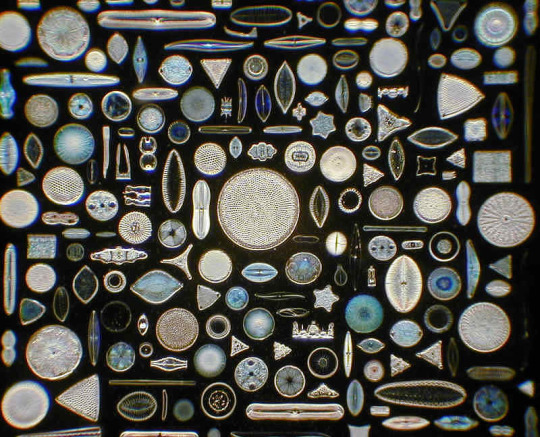
oh wowwww they’re stunning! gorgeous! i love them! beautiful! new favourite organism!
i am thrilled by the fact that plants get their chloroplasts from cyanobacteria. I did not know that. Everything relies on cyanobacteria?!?! Where do cyanobacteria get their chloroplasts from btw?
do the alveoli contain the rest of the cell or are they just empty? what’s in the alveoli? Does that just depend on what specific alveolate it is or do most alveoli have a similar function?
14 notes
·
View notes
Text
Today's advice from your Goth Auntie
Stop slouching, have a snack, drink some water, take your meds.
It is possible to be kind and filled with rage.
The Lurking Horror wanted to look pretty. Tying bows on pseudopodia is surprisingly tricky.
❤️Auntie Jilli
176 notes
·
View notes
Text
I was shopping for groceries at the supermarket near my home and found myself contemplating a bag of bok choy that appeared slightly wilted.
“Veggies are getting so expensive,” I said in Chinese to a fellow shopper, an older auntie with a dark red paisley shirt, khaki pants, and a jade bangle.
She nodded and replied in Singlish, “Ya lor. Last Thursday I buy is $1.25. Today already $1.80. Next time buy cooked food more cheaper.” Then she peered into my basket and advised, “Eh, the kangkong today better. Buy kangkong.”
I took her advice. Aunties who remember the individual prices of vegetables are aunties whose advice on groceries you take.
What a strange phrase “cost of living” is.
Probably only humanity out of all the living things in the world has the concept that being alive should come at a monetary cost. I can’t know for sure that the sea cucumbers do not have a burgeoning society built upon whale bone fragments that they exchange for whatever sea cucumbers eat, but I think they are not so intelligent as to be so stupid.
What have we done to ourselves?
Does a butterfly consider the cost of flying to a yellow flower instead of a pink flower? Does a tree know what it has to expend in order to photosynthesize? Does an amoeba contemplate the price of evolving pseudopodia instead of flagella?
I sure hope not. For one thing, I don’t want cats to learn about economics. They’re powerful enough as they are.
[Read More via link]
14 notes
·
View notes
Text
it's not enough if i watch spy x family i need to eat it. i need to throw out my pseudopodia and absorb it. i need to

23 notes
·
View notes
Photo
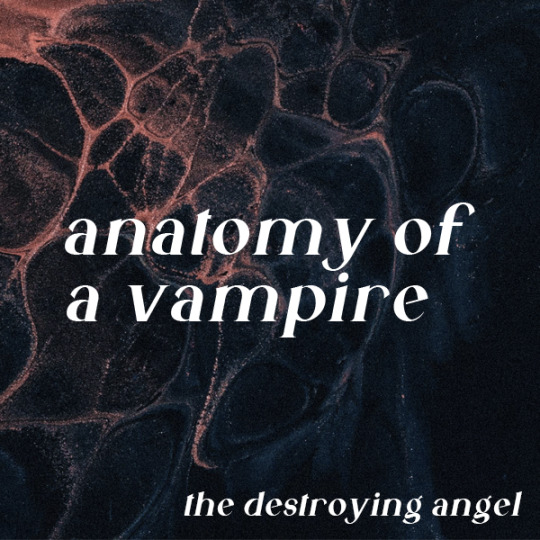
“The thick ears of the Thing grew close to its head but were pointed and projected slightly higher than the elongated skull, giving the appearance of horns. Its nose was wrinkled and convoluted, like that of a great bat, and squat to its face. Its skin was of scale and its eyes were scarlet, like a dragon’s. And it was ... big! The hands where they now appeared and clawed at the soil at its waist were huge, with nails projecting all of an inch beyond the fingers.”
Vampires have no anatomy, as we think of it. A vampire in its primal form is a 45-centimeter leech with an eyeless cobra-hooded head. Its flesh is not flesh as we understand it; it’s more of a metaplasmic substance, a protoflesh that can mutate and transmogrify itself into any shape desired. A vampire can create or extrude pseudopodia, barbs, hands, fins, even complicated and specialized organs like tongues and eyes and jaws. All of these morphing limbs can be created at will, used briefly, and then withdrawn into the body of the vampire and disassembled to provide raw material for another extrusion.
*an excerpt from The Hideous Prize
#jcink premium#jcink roleplay#jcink rp#jcink sci fi#jcink horror#rp: wrinkles & voids#rp: the destroying angel#rp: the cosmic address#tda
2 notes
·
View notes
